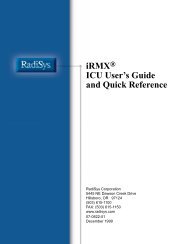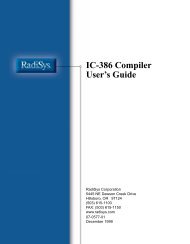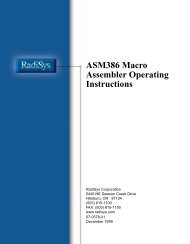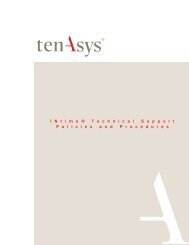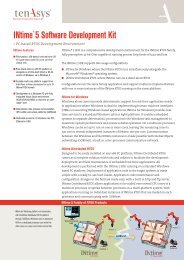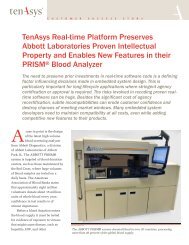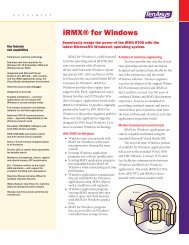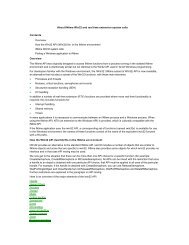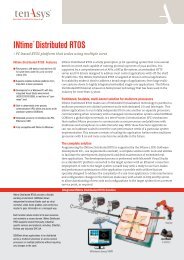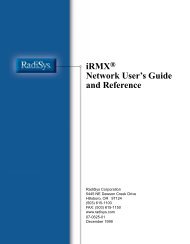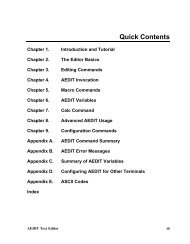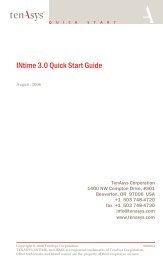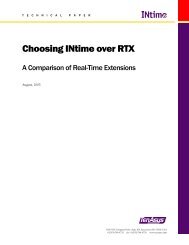INtime® 3.1 Software - tenAsys
INtime® 3.1 Software - tenAsys
INtime® 3.1 Software - tenAsys
You also want an ePaper? Increase the reach of your titles
YUMPU automatically turns print PDFs into web optimized ePapers that Google loves.
3<br />
About INtime software’s<br />
RT kernel<br />
This chapter describes objects provided by the RT kernel.<br />
What does the RT kernel provide<br />
The RT kernel provides:<br />
Item<br />
Object management<br />
Time management<br />
Thread management<br />
Memory management<br />
Description<br />
Includes creating, deleting, and manipulating object types defined by<br />
the kernel. Memory for high-level kernel objects is automaticallly taken<br />
from your processor’s memory pool. You must provide memory for lowlevel<br />
kernel objects and may allocate memory beyond the kernel’s<br />
needs to store application specific state information associated with<br />
the low-level object.<br />
Includes an RT clock, alarms that simulate timer interrupts, and the<br />
ability to put threads to sleep.<br />
Includes scheduling locks which protect the currently running thread<br />
from being preempted.<br />
Implements memory pools from which it allocates memory in<br />
response to application requests.<br />
RT kernel objects<br />
Objects, data structures that occupy memory, are building blocks that application<br />
programs manipulate. Each object type has a specific set of attributes or characteristics.<br />
Once you learn the attributes of, for example, a mailbox, you know how to use all<br />
mailboxes.<br />
Object-based programming, which concentrates on objects and operations performed<br />
on them, is compatible with modular programming. Typically a single thread performs<br />
only a few related functions on a few objects.<br />
The RT kernel provides basic objects and maintains the data structures that define<br />
these objects and their related system calls. When you create an object, the RT kernel<br />
returns a handle that identifies the object:<br />
• High-level objects consume memory, but also a slot in the system GDT (Global<br />
Descriptor Table). Therefore, the maximum number of high-level objects allowed<br />
in the system at any one time is approximately 7600 (8192 slots in a GDT minus<br />
slots used by the operating system).<br />
29



